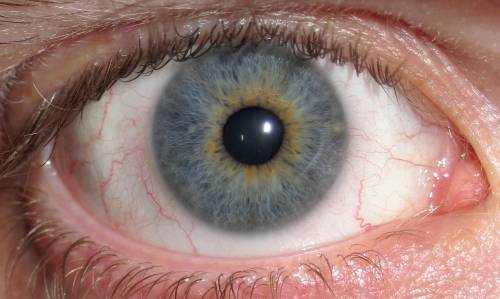Refraction is the process by which light bends as it passes through different mediums—such as the cornea and lens of the eye—to focus on the retina. When this process functions correctly, it enables clear vision. But what happens when refraction doesn’t work as intended? The result is a refractive error, a condition affecting millions worldwide.
Prevalence of Refractive Errors by Age Group
How Does Normal Refraction Work?
In a healthy eye, light rays entering the eye are bent precisely to focus on the retina, the light-sensitive layer at the back of the eye. The cornea and lens work together to refract light, with the lens fine-tuning the focus. This process ensures sharp vision across varying distances, from a book in your hand to a distant mountain peak.
Common Types of Refractive Errors
Myopia (Nearsightedness)
Myopia occurs when light focuses in front of the retina instead of directly on it. This condition makes distant objects appear blurry. Did you know that nearly 30% of the U.S. population is affected by myopia?* It’s becoming increasingly common, particularly among young people due to excessive screen time and reduced outdoor activities.
Hyperopia (Farsightedness)
In hyperopia, light focuses behind the retina, causing nearby objects to appear blurry. While less common than myopia, hyperopia can significantly affect daily activities like reading and computer work.
Astigmatism
Astigmatism arises from an irregularly shaped cornea or lens, leading to distorted or blurred vision at any distance. Imagine looking at a funhouse mirror; that’s how astigmatism can affect sight. Often, it coexists with myopia or hyperopia.
Presbyopia
Presbyopia is an age-related refractive error that makes it harder to focus on close objects. Starting around age 40, the lens loses its flexibility, leading to difficulties in tasks like reading small print. Over-the-counter reading glasses are a common fix, but customized prescriptions offer better results.
Percentage of Refractive Errors in the U.S. Population
| Refractive Error | Percentage (%) |
|---|---|
| Myopia | 42% |
| Hyperopia | 25% |
| Astigmatism | 33% |
| Presbyopia | 50% |
Causes and Risk Factors
Genetic Factors
Refractive errors often run in families. If your parents are nearsighted or farsighted, you’re more likely to develop the same condition.
Environmental Influences
Excessive screen time, lack of outdoor activity, and poor lighting conditions can all contribute to refractive errors, especially in children and adolescents. Modern lifestyles have turned screens into the main culprits of increasing myopia rates.
Age
Age-related changes, such as presbyopia, are inevitable. While these changes can’t be prevented, they’re manageable with proper eyewear or surgical options.
Diagnosing Refractive Errors
A comprehensive eye exam with an optometrist or ophthalmologist typically begins with a discussion about your vision history and any current symptoms. The exam then proceeds with several painless tests:
- Visual Acuity Test: You’ll read letters on a chart to determine how well you can see at various distances. This test helps identify the need for corrective lenses.
- Retinoscopy: The doctor shines a light into your eyes while you focus on an object. This test measures how light reflects off your retina, providing an estimate of your refractive error.
- Autorefraction: Using a machine, your eyes are exposed to a series of light rays to precisely calculate how light bends. This step ensures accurate prescriptions.
- Phoropter Testing: This device allows you to look through different lens combinations to refine your prescription for the sharpest vision.
Specialists emphasize that these tests are non-invasive and usually take under an hour. Dr. Amanda Stevens, an optometrist from Chicago, advises, “Routine eye exams are crucial even if you think your vision is fine. Many refractive errors progress gradually, and catching them early ensures better management.”
Treatment Options
Glasses and Contact Lenses
Eyeglasses and contact lenses are the most common solutions. They work by compensating for the eye’s inability to refract light correctly, ensuring clear vision.
Refractive Surgery
For those seeking a more permanent solution, refractive surgery, such as LASIK, reshapes the cornea to correct how light focuses on the retina. According to a 2022 survey, over 700,000 LASIK procedures are performed annually in the U.S., with a 96% patient satisfaction rate.
Orthokeratology (Ortho-K)
Ortho-K involves wearing specialized contact lenses overnight to temporarily reshape the cornea. While not a permanent fix, it’s a non-invasive option for managing conditions like myopia.
Did You Know?
- Fact: By 2050, nearly 50% of the world’s population is projected to have myopia. This statistic underscores the importance of early detection and prevention strategies. [Source: World Health Organization]
Can Refractive Errors Be Prevented?
While genetic factors are unchangeable, lifestyle modifications can help reduce the severity of some refractive errors:
- Encourage outdoor activities for children to limit myopia progression, as exposure to natural light helps slow its development. For instance, pediatric ophthalmologists from Boston suggest aiming for at least two hours of outdoor play daily.
- Maintain proper screen distances and take regular breaks using the 20-20-20 rule: every 20 minutes, look at something 20 feet away for 20 seconds. This simple practice, recommended by optometrists nationwide, can significantly reduce eye strain.
- Use adequate lighting when reading or working, ensuring a well-lit room to minimize glare and reduce contrast strain on the eyes. According to vision experts in San Francisco, adjustable LED desk lamps with warmer light tones are ideal for this purpose.
Editorial Advice
If you experience symptoms like frequent headaches, eye strain, or blurry vision, schedule an eye exam. Modern solutions, from glasses to cutting-edge surgeries, ensure that refractive errors don’t hinder your quality of life. Early detection is key—don’t wait for your vision to blur your world.
Satisfaction Rates of Corrective Methods
| Method | Satisfaction Rate (%) |
|---|---|
| Eyeglasses | 85% |
| Contact Lenses | 80% |
| LASIK | 96% |
| Orthokeratology (Ortho-K) | 70% |





